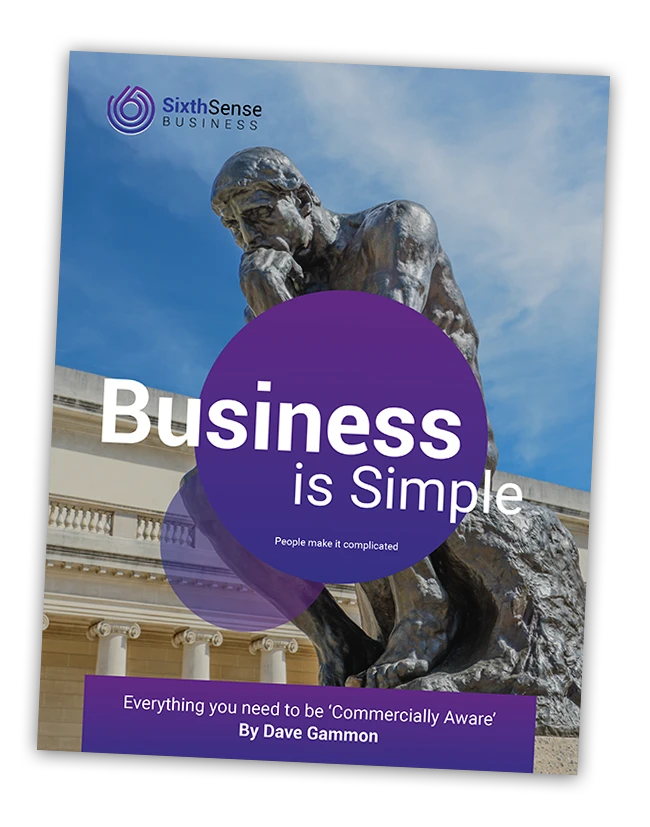From:
David A Gammon, Sixth Sense
To:
Leaders
Date:
February, 2023
95% of so-called high-performance commercial cultures are anything but that. In many companies, I only see a person’s performance managed properly when their feet are already dangling perilously out of the door.
Sportspeople understand high performance because it’s easy to figure it out. There is an unambiguous score, time, distance or position, a level playing field, and a static set of rules.
So how do you establish what high performance is in the commercial world when;
- The rules, competition and the playing field keep changing.
- It is hard to know if (and how) you are winning.
- There are many different roles done in different ways (What does it mean to be a high-performance warehouse operator, Accounts Payable clerk, Commercial Manager or CEO?).
Just because it’s not easy doesn’t mean we shouldn’t do it. Let’s talk about it.
To pursue high performance at anything, a person needs two things.
- 1A clear understanding of what high performance is, the layout of the playing field, the rules and how the score is kept. I call this a clean action framework.
- A way of examining, challenging, and improving what they are doing. Coaching remains the only way of doing this (for reasons we’ll cover).
The Clean Action Framework
If you want high performance, you must specify what that is AND give people the means to chase it. This framework consists of five simple elements.
- Clearly set out what mediocre, good and high performance looks like and the lines they are expected to stay within when chasing it.
- An honest reality check of their current skills, knowledge, abilities, priorities, and resources.
- An action plan of what must be done and how to create high performance.
- A means of identifying and resolving (or escalating) obstacles getting in the way of high performance.
- Data to measure performance and outcomes and a communication framework for reviewing progress.
High-Performance Coaching
Coaching is the only practical way to help people perform. Other methods are also available, but they are sub-optimal. Coaching
- Address the person’s thinking, which is always the root cause[i]
- Creates self-reliance.
- Engages creativity so that shifts in perspective wire themselves in
- Stops them from forgetting what actions and behaviours they commit to
- Reduces resistance (after all, no one likes being told what to do)
- Deepens connections between employees and teams.
Adopting coaching as a leadership style is a massive shift for most leaders, not least because it is often uncomfortable for both parties[ii].
The elements that make up a good coaching conversation are:
Connection – By being trustworthy and showing that they care, a coach allows people to open up about their desires, disappointments, and fears. Emotional states (and related thinking) drive behaviour and action. This is not fluffy nonsense. It is the root cause of performance (or lack of it).
Understanding – By using reflective enquiry and supporting questions (accompanied by active listening and the suppression of our desire to solve people’s problems), a coach allows people to explore their thinking and actions fully and see the flaws therein.
Communication – Clarification, recapping and summarising by the coach reinforces what has been said / not said and enables people to refine their perspectives and develop good solutions.
Action – A coach ensures that people have committed to clear actions and that there is at least one next step.
The skill of coaching is to hold a space for someone to reflect on and question their thinking and performance deeply. A coaching session should be a sacred space, not a time for general updates and working through a to-do list of observations and actions.
When you combine the clean action framework with a disciplined approach to coaching conversations, the potential for high performance is optimised, and you might be surprised at how positively people respond.

